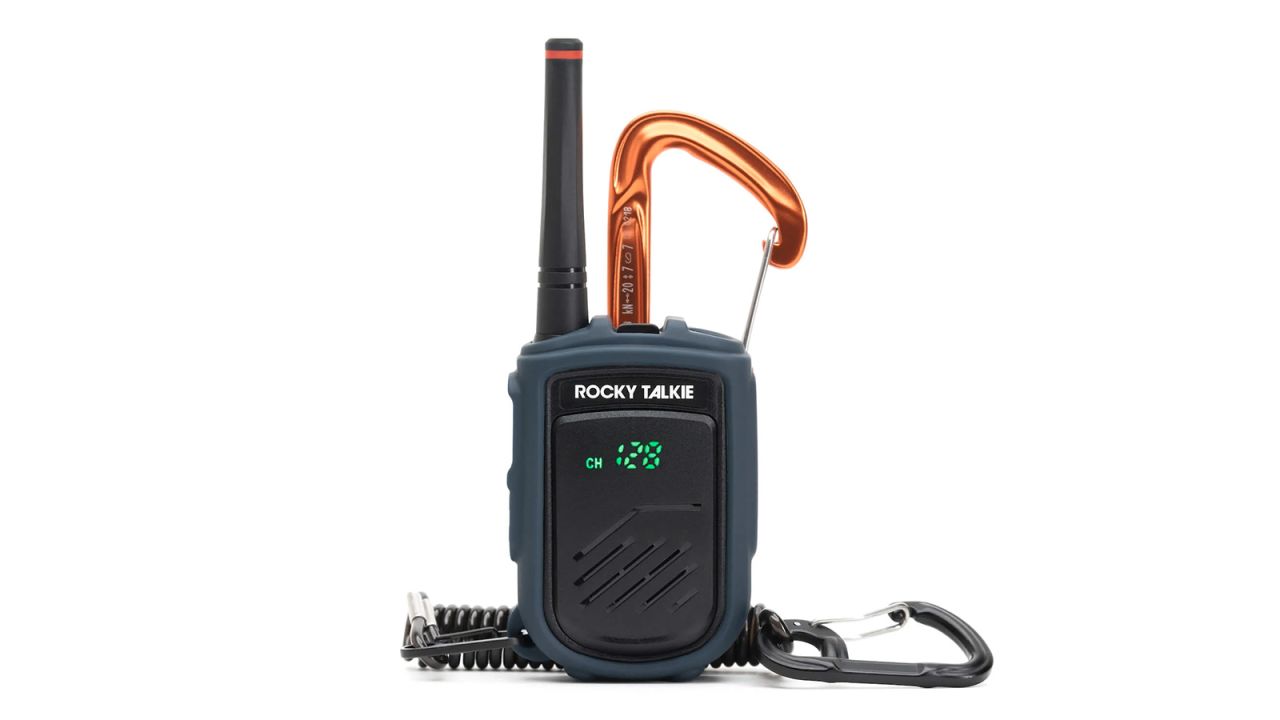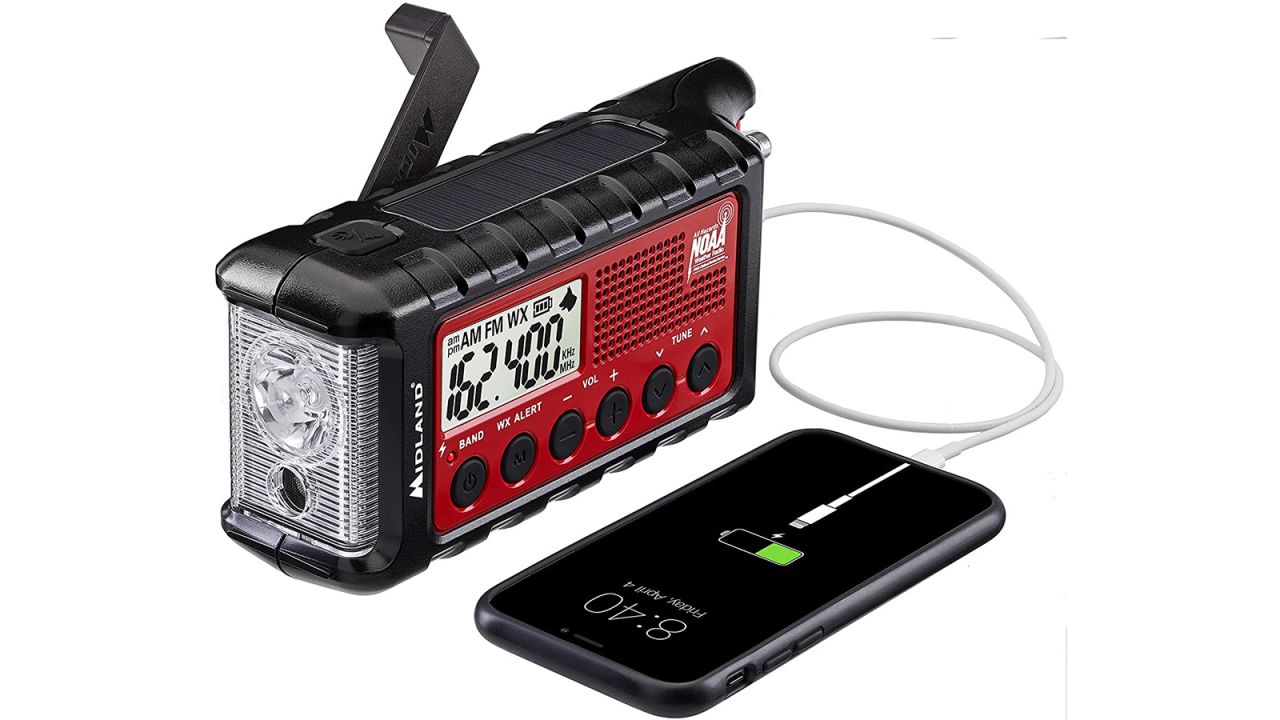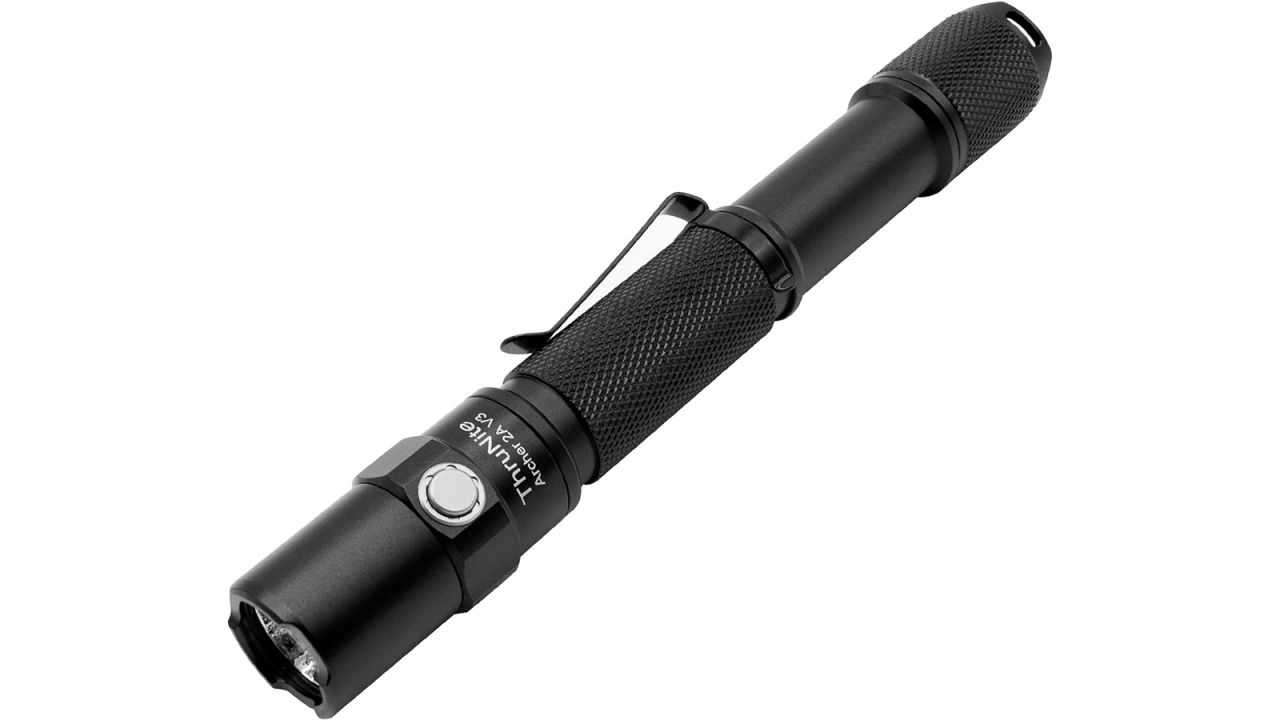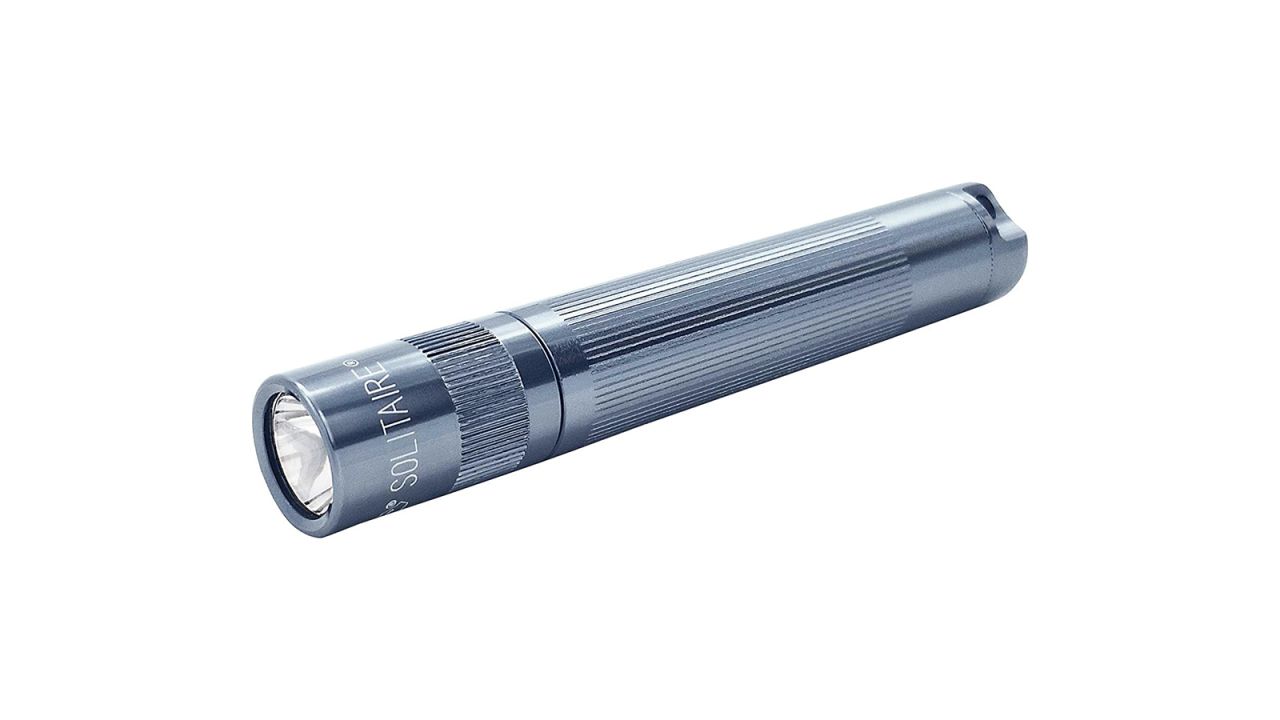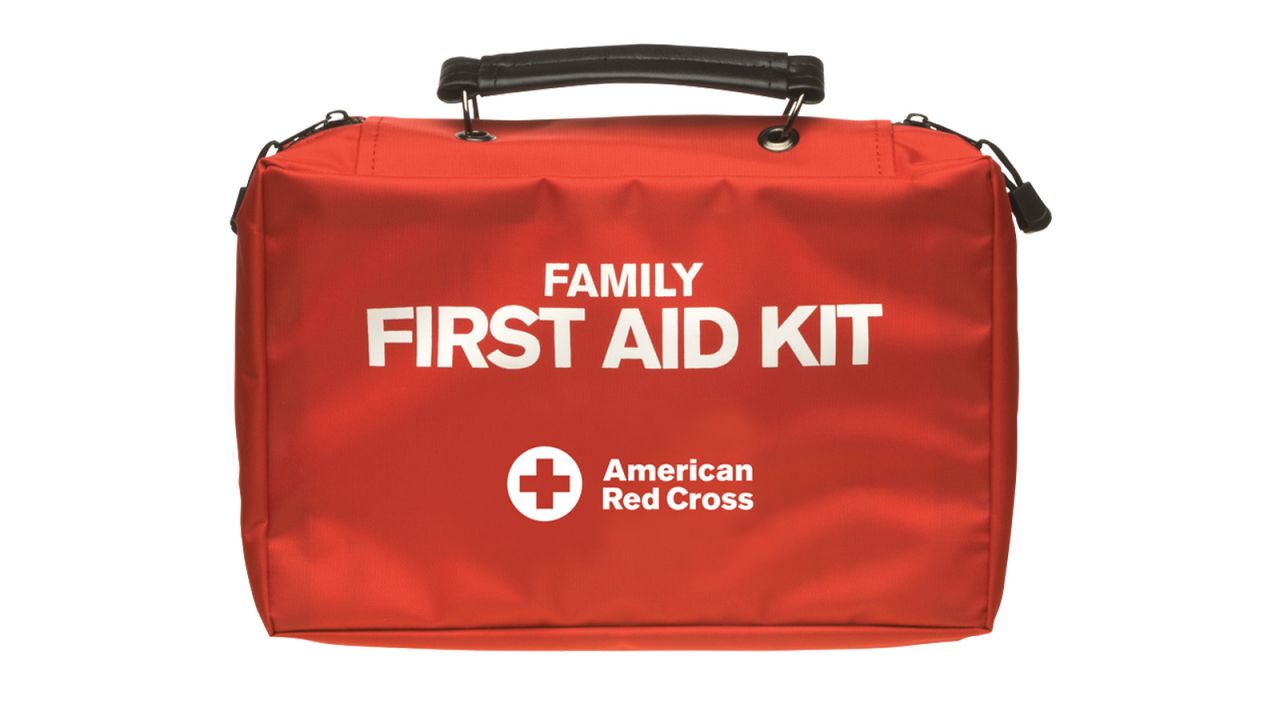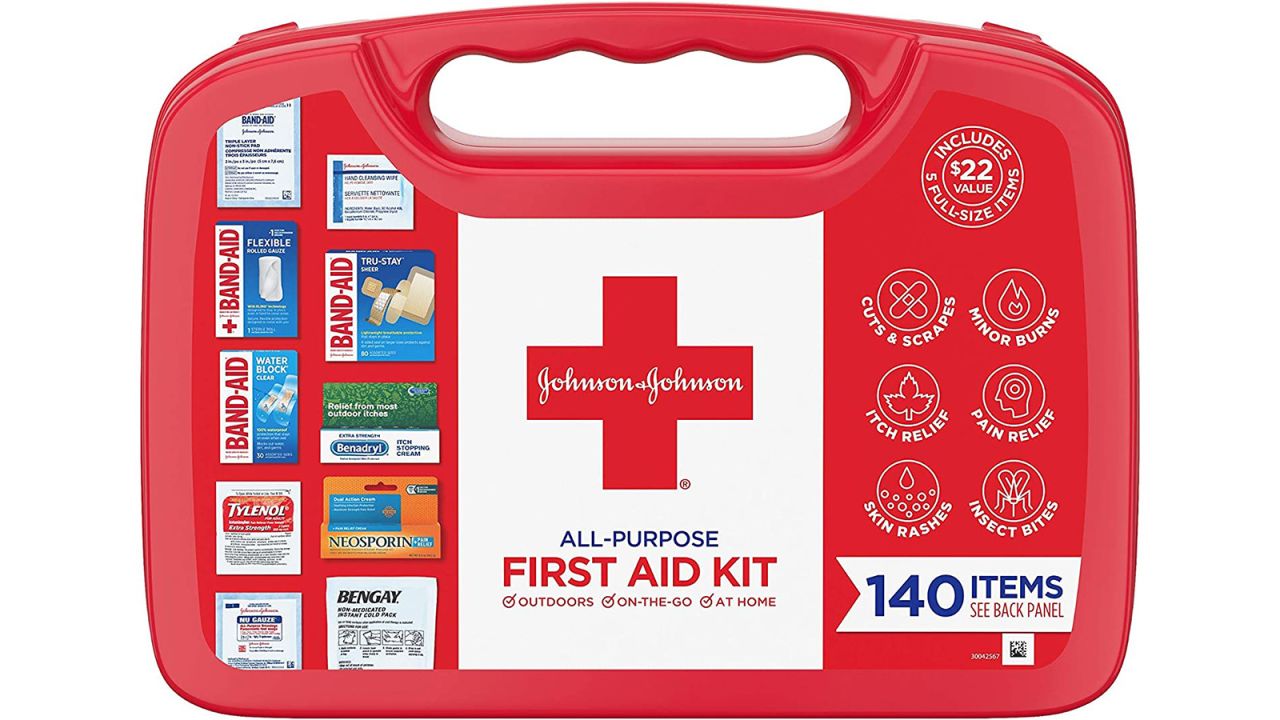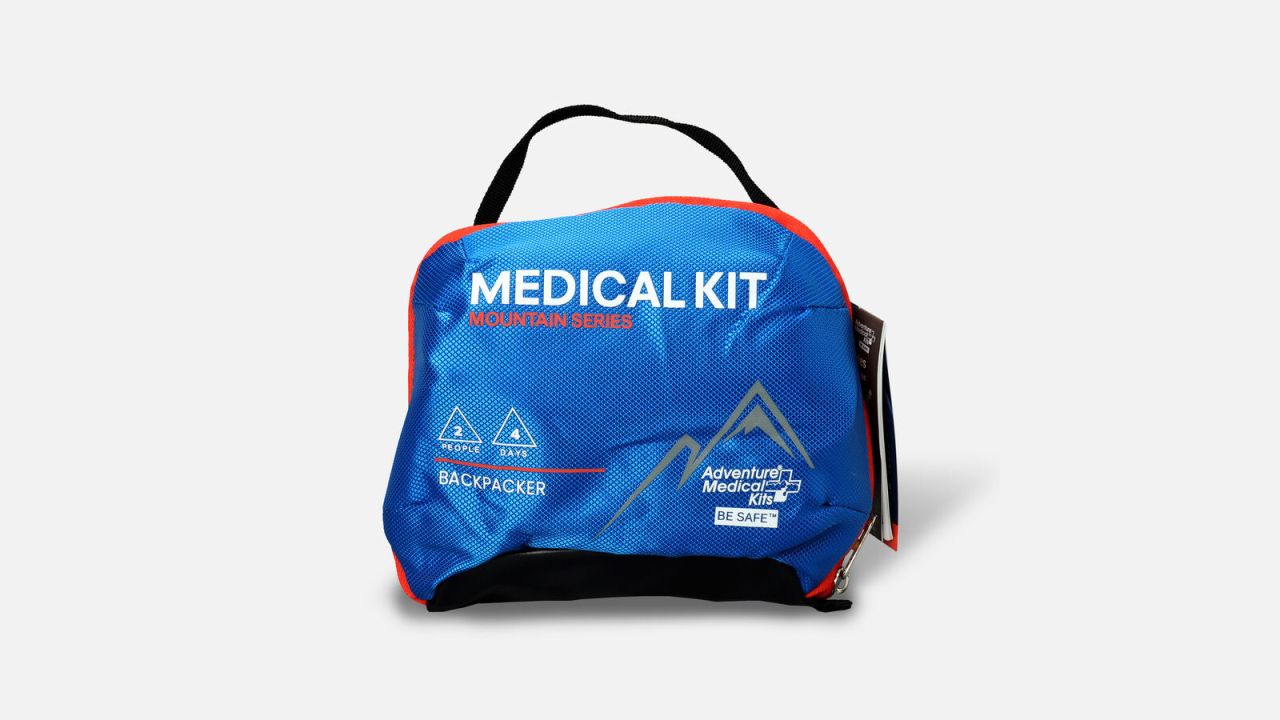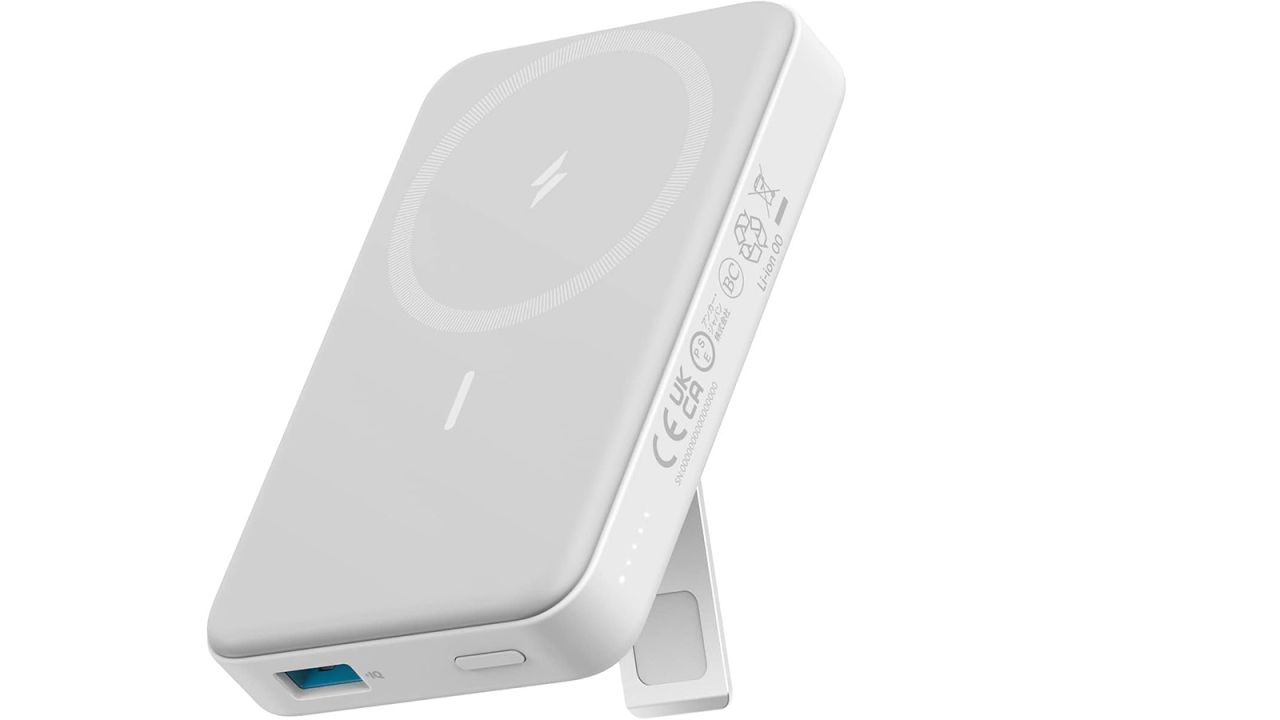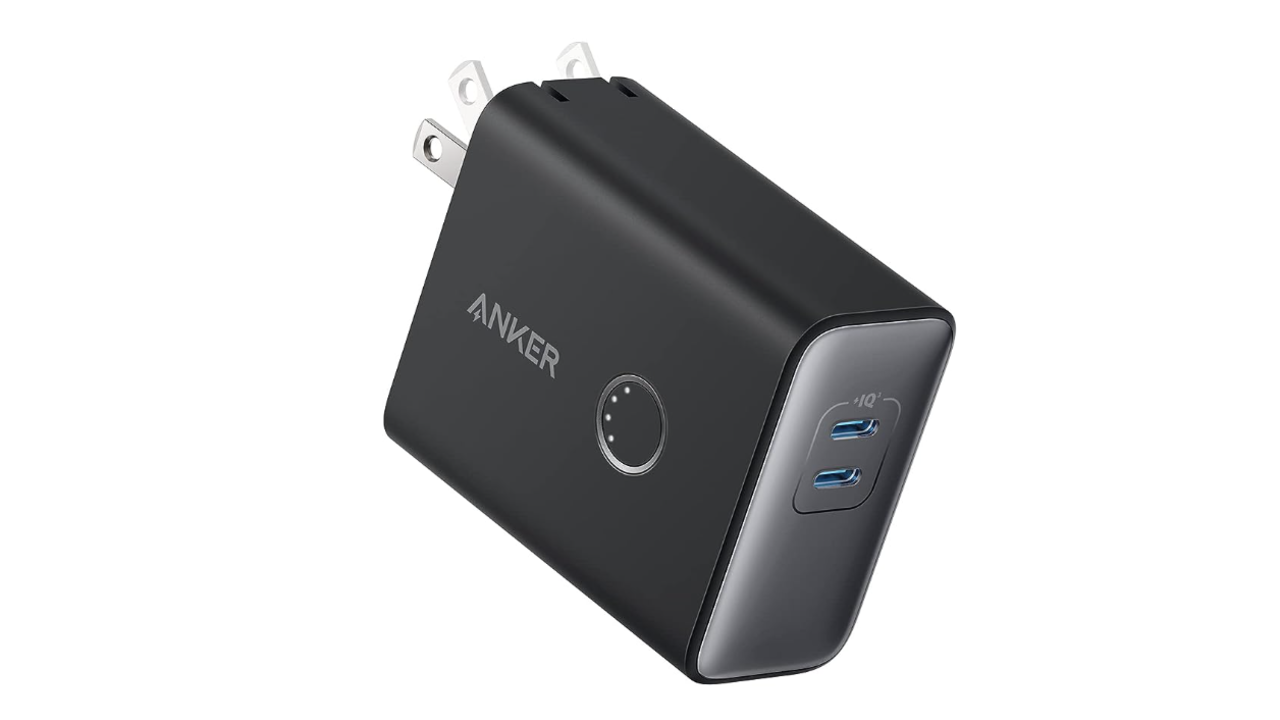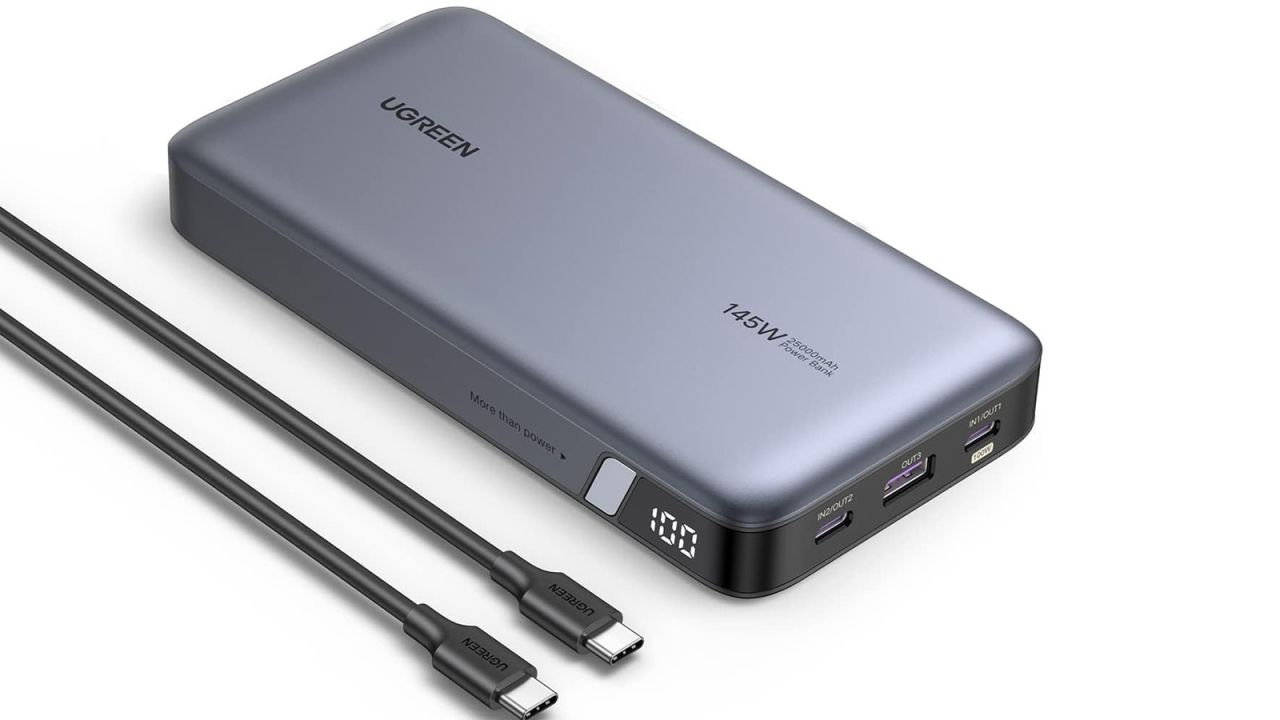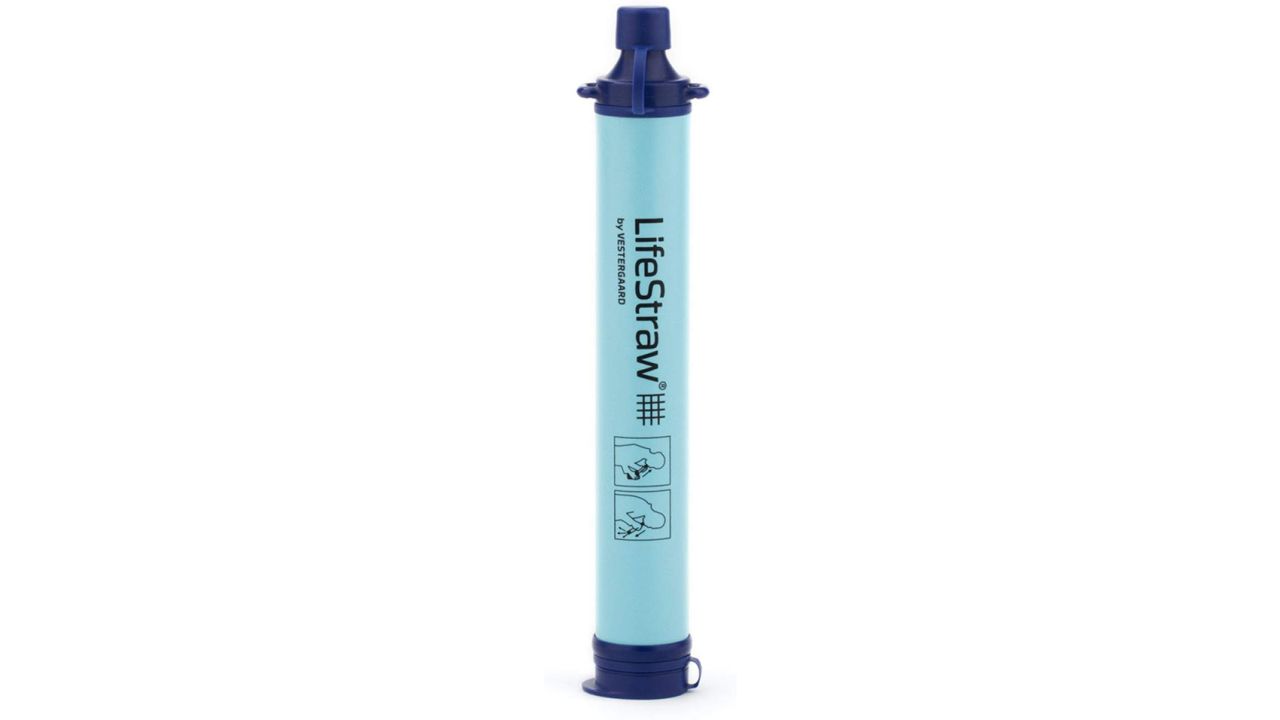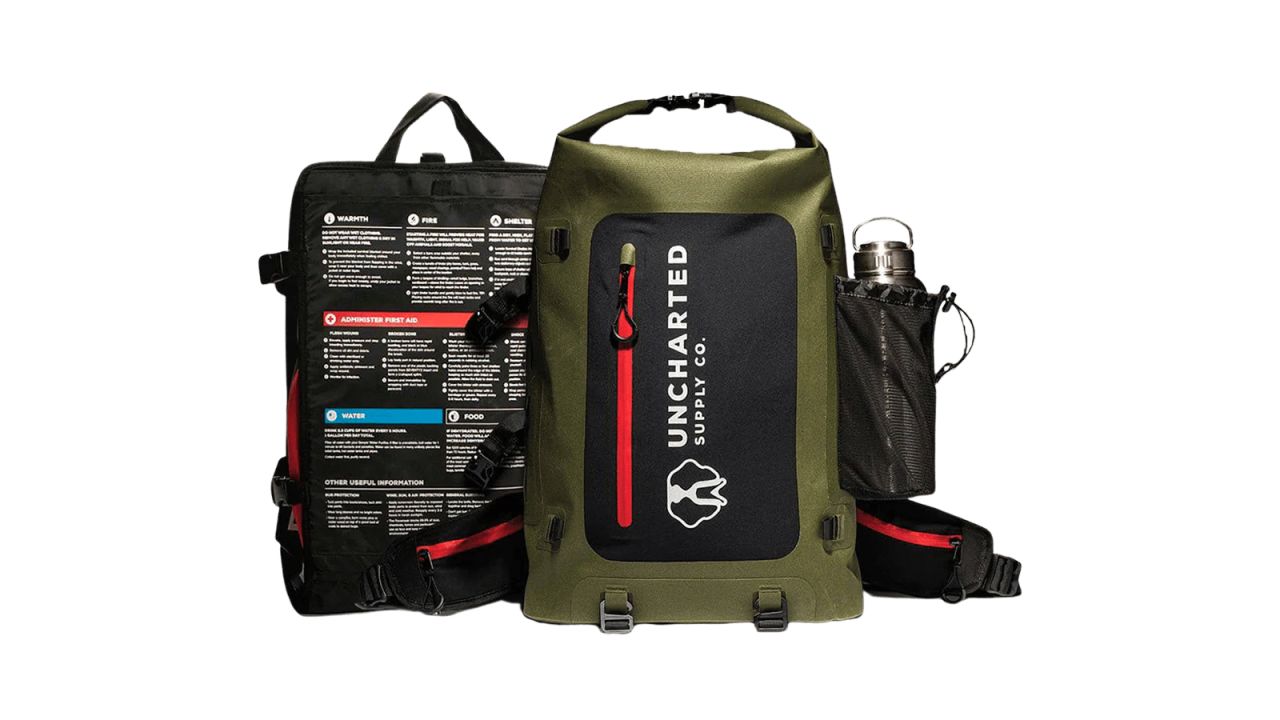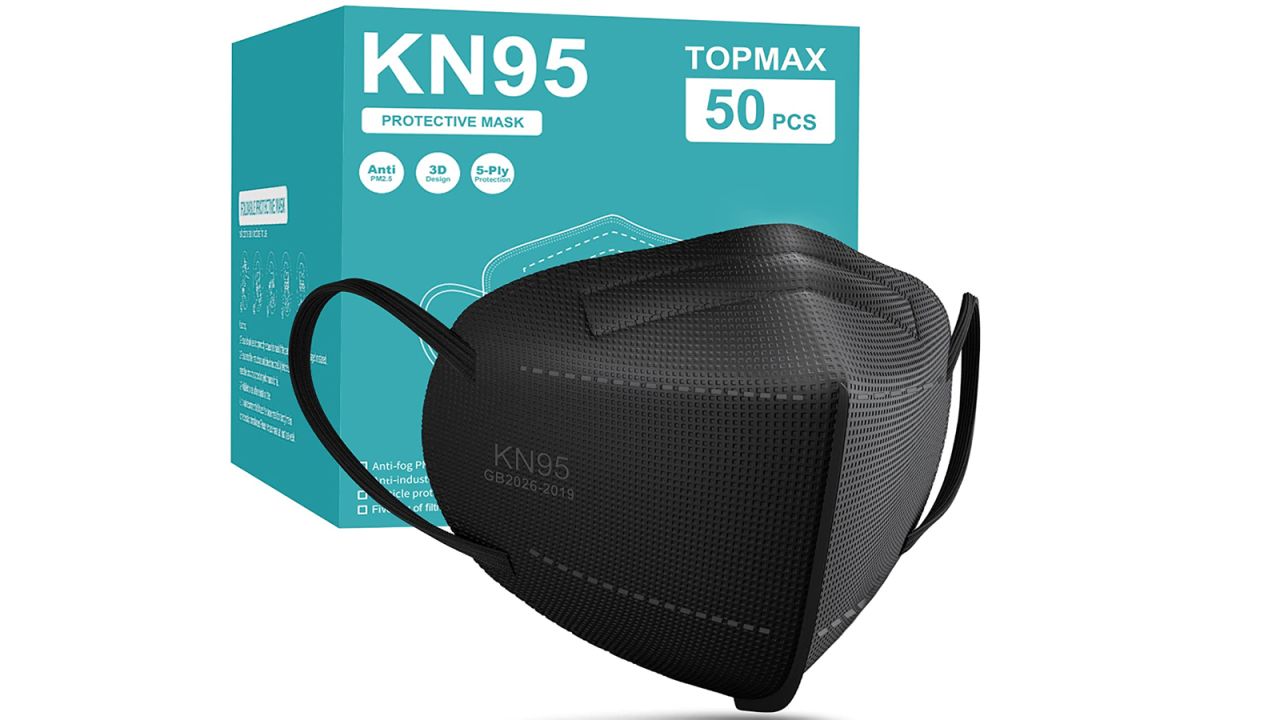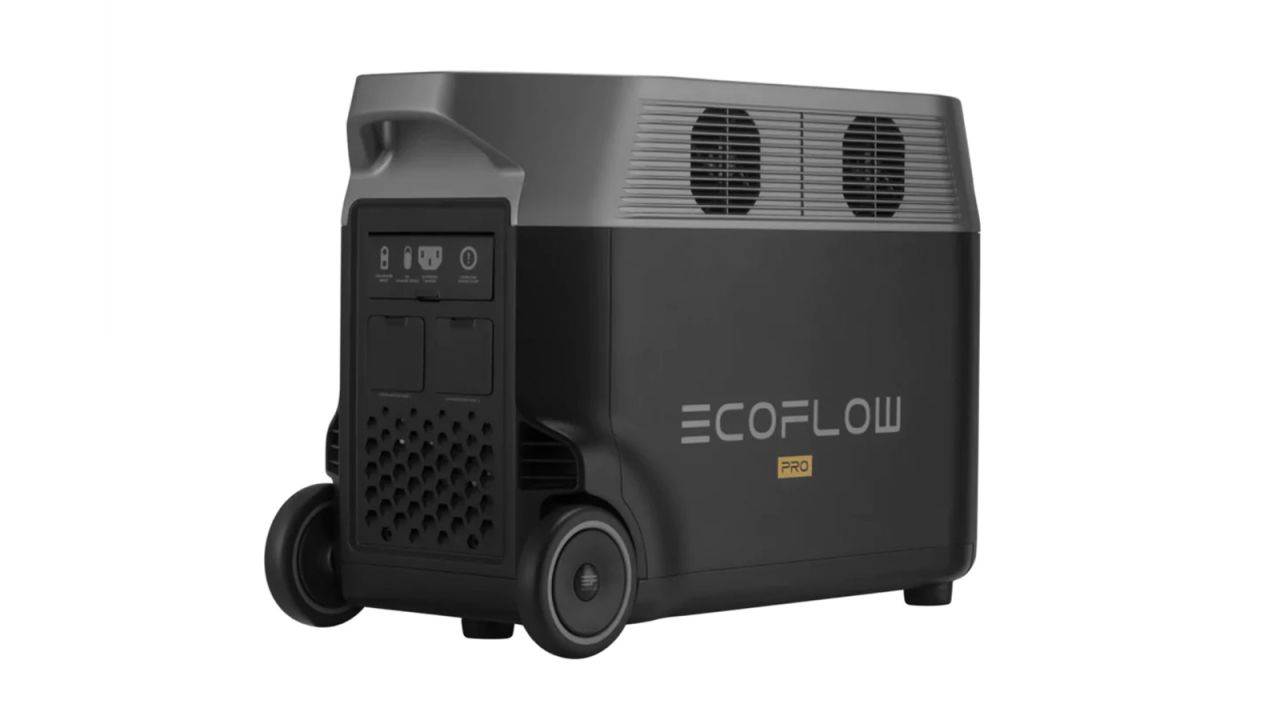Natural disaster prep quick picks
First aid kit: Red Cross Deluxe Family First Aid Kit
Bug out bag: Emergency Zone Stealth Tactical Bug Out Bag
Emergency radio: Midland ER310 Emergency Radio
Flashlight: ThruNite Archer 2A V3 Flashlight
Extreme weather is inevitable. It can occur at any time and impacts different parts of the country in different ways, as some areas experience hurricanes or tornadoes while others deal with wildfires and earthquakes (to name a few).
Because these weather patterns are so common, it’s vital to have certain supplies on hand for natural disaster preparedness. While our team at Underscored has tested first-aid kits, bug out bags and other emergency supplies, it’s time we got organized based on the needs specific to certain natural disasters.
Below is a round-up of emergency supplies and preparation resources, including recommendations from experts as well as a selection of gear we’ve tested ourselves. While many of the recommended supplies are similar, we’ve spoken to different experts to provide advice based on specific natural disasters like wildfires, earthquakes, hurricanes and tornadoes.
Above all, preparation is key. It helps you feel confident in your response to natural disasters, and depending on the extreme weather the area you live in is prone to, there are different ways to stay ready. Here’s what to keep on hand when facing weather emergencies.
General emergency supplies
A unifying thread when preparing for these (and other) natural disasters is having various emergency supplies ready.
“Having supplies thought-out well before a disaster arrives, or hits you, is gonna save you lots of time,” says Tom Heneghan, Program Manager of Community Preparedness Education and Youth Preparedness at the American Red Cross. “It just brings down your stress level and makes you so much more ready, because the worst time to think about a disaster is … when you realize ‘Oh gosh, we got one and I’m not ready.’”
Heneghan stresses the importance of customizing emergency supplies to fit your specific needs. “You cannot buy a kit that’s ready for you,” he says.
We referenced informational resources from Ready.gov and The Red Cross, spoke with subject matter experts and revisited our previous testing to provide an organized list of product recommendations one might need in a natural disaster. For those just beginning to assemble their supplies, or people looking to update their kits, use this as a template to build up what you’ll need in an emergency.
Walkie-talkies
Ranked the best walkie-talkie in our testing, the Rocky Talkie Mountain Radio provides strong clarity, great battery life and compact design. Our tester praised it for how user-friendly this product is and noted that others they tested did not come close to the quality of this product.
Emergency radios
“For short-notice events and things like that, I think it’s helpful to have something that can alarm you,” Heneghan says.
Along with being mindful of emergency alerts from your phone and downloading warning apps (like the Red Cross app), include a battery-powered radio with NOAA Weather Radio and tone alerts to receive warning notifications and information.
Named our best emergency radio through our testing, the Midland ER310 received praise for bring so easy to use. According to our tester, setting up and testing NOAA alerts was a breeze.
This radio was also tested by our team and, though not named a winner, it’s a suitable?alternative at a lower price point.
Flashlights
Along with providing light in a potential power outage, a flashlight can also be used to signal for help in an emergency. Here are a few flashlights our team has tested, along with other battery-powered light options.
This 1-ounce, 6-inch-long flashlight has four brightness settings and was named the best flashlight through our testing. While there are flashlights with a more powerful output, the ThruNite Archer 2A V3 ranked high for its use for indoor and shorter-distance illumination tasks. Plus, it proved to be durable and significantly waterproof in testing.
Rated the best rechargeable flashlight by our tester, the Fenix PD36R works great for long-distance and short-range visibility. While you’ll want to ensure this is charged before placing it in your kit (and make sure you have a charging brick with you as well), this flashlight impressed our tester with its long run time (over 13 hours)
Small enough to fit on a keychain or throw in your go-bag, the Maglite Solitaire Flashlight is the best compact flashlight we’ve tested. This flashlight weighs less than an ounce, and you can adjust from a spotlight to a flood-style beam with a simple twist. Though you can’t adjust the specific beam strength, our tester liked using it to shine light in cramped spaces.
If sheltering in place without power, utilizing battery lanterns provides the light you’ll need while eliminating any fire hazard. This lantern two-pack was referenced in our power outage supply guide and can last up to 50 hours (with properly charged AA batteries).
In the instance of an emergency evacuation and/or sheltering in place, utilizing a headlamp provides hand-free mobility. The GearLight Headlamp is equipped with an adjustable headband and offers white and red light settings. Right now you can also clip the on-page coupon for an additional 20% off.
First aid kits
First aid kits are a core staple of emergency supplies. Our team has tested the following kits, all evaluated while keeping expert recommendations in mind.
According to our testing, this first aid kit is versatile and durable. It provides necessary first-aid supplies (recommended by the Red Cross) in a ring-binder style and received praise from our tester for including a comprehensive informational packet.
Easy to navigate (and at a great price) this was ranked the best budget first aid kit through our testing. While it does not have all the essentials recommended by a Red Cross expert (like gloves, a CPR face shield and tweezers), it provides a variety of first aid basics and a Red Cross manual.
Named the best first aid kit for camping, backpacking and outdoor adventures, our tester noted this compact kit would also be great to throw in a car or store in your home for emergencies. Minus a CPR face mask, it includes all essential first aid supplies recommended by a Red Cross expert.
While many experts stress the importance of keeping your phone with you and charged during natural disasters, a walkie-talkie can serve as a backup communication alternative.
Batteries and chargers
Keeping extra batteries and portable charges in your kit will ensure your battery-powered supplies and electronics stay on during emergencies.
Experts recommend having extra batteries as part of your emergency supplies, as you might rely on battery-powered tools during a natural disaster.
Another option to maintain long-lasting battery life is to include a battery charger in your kit. This charger is also compatible with AAA batteries. It’s important to think about whether or not you’ll have access to a power source to recharge, though. If it makes sense for your needs, add it to your kit.
While many of our experts stressed the importance of keeping your phone on you during a natural disaster to receive alerts, updates, contact help, etc., they also stressed the importance of keeping it charged. This MagSafe portable charger was ranked best overall in our testing, as it charged phones quickly and was fast to recharge itself.
Underscored is a big fan of this Anker 521 Portable Charger Power Bank. It hosts USB-C cables and doubles as a wall adapter. The charger’s two USB-C ports will split charge if plugged in at the same time, and the Anker 521 will charge itself when plugged into the wall. In times when it is imperative to have a charged phone, this is a compact option to add to your emergency supply kits.
This portable charger offers port variety and power. A USB-A port is sandwiched between two USB-C ports, each offering different power capabilities for charging. It ranked as the best portable charger for laptops and tablets in our testing and is an option to include in a kit to ensure all your devices remain charged when facing extreme weather.
Nonperishable food and water supplies
Whether you’re planning on sheltering in place or creating a go-bag to evacuate with, emergencies will call for variations in how you store these supplies and how much you pack ahead of time. Heneghan and the Red Cross recommend having three days’ worth of supplies for a go-bag and two weeks’ worth for a stay-at-home kit for sheltering in place. When planning for three days’ to two weeks’ worth of food, canned foods and protein bars are good choices for nonperishable items.
Experts recommend one gallon of water per day per person when gathering emergency supplies. Keep in mind that you might need extra water for things like cooking if utilities are down post-natural disaster. Heneghan recommends having a plan for accessing water if you’re unable to carry large amounts with you in an evacuation.
Canned foods are a great nonperishable food option to include in your emergency supplies. This means you’ll also need a manual can opener. This OXO can opener was ranked the best manual can opener in our testing.
These water jugs store up to 4.8 gallons of filtered water. Keep them as part of your emergency supplies to shelter in place.
While experts acknowledge carrying large amounts of water in a go-bag might prove difficult, the need to plan for hydration remains crucial in an emergency. The LifeStraw Stainless Steel bottle filters out contaminants of the water it’s filled with, so if you have access to water, you’ll be able to ensure it’s clean with this tool.
If you don’t have access to clean water in?an emergency, LifeStraw allows you to create clean, drinkable water. While you need to plan for access to clean water in your emergency supplies, throwing the LifeStraw in your go-bag or kit will allow you to filter any water you have access to in times of need.
Tools
Dealing with the aftermath of a natural disaster might call for turning off the gas and water of your home with a wrench or pliers. You can either purchase these tools individually or invest in something like a multi-tool.
If you don’t already have a wrench on hand, this tool was designed specifically for the instance where you’ll need to turn off your gas and/or water and is double-sided for you to accomplish both.
Pliers can also be used to shut off your gas and water. This multitool was ranked the best multitool in our testing. It includes Leatherman needle-nose pliers, one of the 14 total tools included with this product.
Whistles
Experts recommend keeping a whistle with a lanyard with your emergency supplies to signal for help in an emergency.
Keeping a whistle around your neck during an emergency will allow you to signal for help, if needed.
Personal Hygiene
Depending on your individual needs, include items for personal hygiene as part of your emergency supplies.
Include moist towelettes in your kit to anticipate your personal hygiene needs in an emergency.
Trash bags can be multipurpose in an emergency supply kit.
Medicine, maps, personal information and pets
The Red Cross recommends having a one-month supply of medication stored in a childproof container, along with other medical supplies you might need in preparation for an emergency. Heneghan and other experts stress the importance of organizing and preparing your prescription medication ahead of time. For example, keep an extra inhaler in your go-bag or store your medication/supplies in a secure spot and set a reminder to grab them before evacuating.
While it’s important to have your phone on hand (and charged) during a natural disaster, it’s smart to have a backup plan. Prepare yourself by including maps of your area as part of your supplies and writing down personal contact and emergency contact information.
The Red Cross provides an Emergency Contact Card template to fill out and include on your person and or in your emergency supplies. “Fold it up, stick it in your wallet. Hopefully, you never need it,” Heneghan says.
Along with contact information, Heneghan recommends being mindful of where important documents are in your space so it’s easy to grab them in times of need.
Store important documents securely during times of extreme weather and natural disasters.
While every expert stressed the importance of customizing your kit, they also said to not forget about your pets. Plan ahead to ensure they’re taken care of.
Bug out bags
If you purchase a pre-assembled kit or bug-out bag, Heneghan says “… you still have to go in and make that kit your own.”?The following bug-out bags have been tested by our team and are a good start when gathering emergency supplies.
This kit was named the best bug out bag in our testing. It includes a hand-crank radio, a first aid kit, food rations and other emergency supplies.
Rated the best budget bug out bag in our testing, this kit is equipped with survival supplies for two. It also includes a dome tent (though it does not fit in the bag).
Wildfire preparedness
In addition to keeping general emergency supplies on hand, here are specific prevention and preparedness recommendations for wildfire-prone areas.
Create a defensible space and harden your home
For property owners in areas commonly impacted by wildfires, wildfire prevention is a key element of preparation. “95% of our wildfires are human-caused, so we can do our part to help minimize that,” says Cal Fire’s battalion chief of communications, Brent Pascua. “We like to tell people to prepare by creating that defensible space around your home.”
Part of creating defensible space is removing dead/dying brush, keeping grass under 4 inches tall and ensuring there’s nothing combustible across your property. “Keeping it nice, lean, green and clean … 50 feet out from your residence, that’s something homeowners can do on their own,” Pascua says.
Along with creating defensible space, home hardening — or making fire-resistant updates to your home — is another way to prepare against wildfires. Pascua recommends taking inventory of your space and noting what can be improved for fire safety. “Just being able to go around your property and take an assessment of where you can improve and prepare, that’s a great start,” he says.
While some home hardening might require construction, and, therefore, a contractor, utilizing fire-resistant materials while improving your home, removing debris and constantly checking for areas of improvement are all ways to stay vigilant against wildfires.
Seal openings with fire-resistant weather stripping to prevent fire embers from entering your space.
Install fire-resistant gutter guards to keep flammable debris, like pine needles and dried leaves, from accumulating in your rain gutters. This collection includes gutter guard options and a gutter guard brush.
Creating a go-bag
Prepare for a potential wildfire evacuation by gathering emergency supplies ahead of time.
“In your go bag, you want to have items like three days’ worth of food and water, first aid kits, any kind of backup battery power you may have, flashlights, extra batteries and even an emergency radio in case communications are down and you need to get updates on evacuation zones or evacuation centers,” Pascua says. “Those are the things you want to have prepared in advance in case you need to evacuate quickly.”
Pascua recommends revisiting the supplies twice a year and says you can place them in the car or along your exit route out of your space. He also stresses the importance of creating an evacuation plan that you and your loved ones revisit. “Prepare with your family. Have a plan, have multiple exit routes out of your neighborhood and let your family know about them. Come up with a meeting spot: That way, in case communications are down, everyone knows where to go,” Pascua says.
Earthquake preparedness
If you live in an earthquake-prone area, here’s what you’ll need (along with general emergency supplies) and what you can do to prepare for the shaking.
Secure your space before the shaking starts
Mark Benthien, the director for public education and preparedness for the Statewide California Earthquake Center (SCEC), says the first step in preparing for an earthquake is securing your space.
“For earthquakes, the biggest source of injuries is not buildings falling; it’s things falling, glass breaking, heavy items falling and hitting people, bookshelves [falling] over, TVs, all sorts of things,” Benthien says.
Adding latches to kitchen cabinets to prevent them from flying open during shaking and using putty to keep items on shelves in place are both examples of securing your space.?While many products work to secure homes, Benthien highlighted Safe-T-Proof and ReadyAmerica as two companies that make products designed to secure your space in earthquakes.
Fasten any freestanding furniture you have to the wall with these anti-tip fasteners as another way to minimize post-earthquake breakage and damage.
This reusable putty can hold items of up to 20 pound in place. Use it to secure items ahead of any earthquake shaking.
This set of museum gel, wax, and putty will hold small items in place during shaking.
Stop your cabinets from flying open and spilling out during shaking with cabinet door latches.
Have an under-bed bag
While you might have been told to keep a pair of shoes by your bed in case of an earthquake, an under-bed bag’s sole purpose is to hold supplies you need to get out the door and eliminate the risk of your shoes (and other supplies) being moved or impacted by an earthquake.
“This is not your go-bag. This is a ‘get out of bed without stepping into broken glass, whether on the floor or in your shoes,’ bag,’” Benthien says.
In this bag, you want to include shoes, socks, a flashlight and any personal items you may need to evacuate safely (like prescription glasses). Benthien also mentions optional items to include like a pair of gloves (in case you need to move debris), a crowbar (to get through any jammed doors), a dust mask and a hard hat.
Once you assemble your supplies in a bag, tie it to your bed frame so it’s reachable after an earthquake. Benthien says his under-bed bag has been in place for 10 years.
Durable work gloves can protect your hands when moving through debris post-earthquake. At a minimum, Benthien recommends keeping garden gloves in your supplies as a form of protection.
Add a few KN95 face masks to your under-bed bag to protect yourself from dust inhalation post-earthquakes.
Protect yourself post-shaking from falling debris with a hard hat.
Include a flat bar like this in your kit to get through jammed doors and sort through debris post-earthquake.
Personalize your supplies
“No one is going to sell you your specific things,” Benthien says. While many of the supplies in an under-bed bag and a go-bag remain the same across the board, including extras like your prescription medication or personal hygiene products are important elements of personalizing your kits. Customize your supplies as you see fit.
Since ATMs and banks might be inaccessible in the aftermath of an earthquake, Benthien recommends having cash as part of your emergency supplies. “Have ones and fives, not twenties, as much you can afford to include,” he says.
Staying — or returning — home safely
If it is safe to stay in your space (or return to it) after an earthquake, you may be without basic utilities. Keeping extra water on hand (enough to cook with and drink) and a power generator will help in the case of a post-earthquake power outage. It’s also important to have a fire extinguisher, as fires can start in the aftermath of earthquake damage.
If power is out post-earthquake, you may want to utilize a power generator. This was ranked the best high-capacity solar generator in our testing. The brand also sells solar generators with different power capabilities.
Keep fire extinguishers on hand to prevent the possibility of a post-earthquake fire. Cracks in gas pipes and exposed power lines are all potential causes of the flames.
When storing water for natural disaster preparedness, have enough water for cooking. This water tank has a 55-gallon capacity and is made with FDA-approved materials.
Hurricane preparedness
Living in a hurricane-prone area calls for preparation for both your home and emergency supplies. Here are some hurricane-specific considerations to prepare for.
Know your zone
“The first thing we always tell people to do, whether you’re just moving to an area or you’ve lived there for years, is to know your risk. Know what a storm could do in your area,” says Robbie Berg, a warning coordination meteorologist at the National Hurricane Center.
“Find out if you live in an evacuation zone because many people don’t understand,” he says. “They think of hurricanes, they think of the wind, the Saffir-Simpson scale, but it’s not usually the wind that takes the most lives. It’s usually the storm surge — the ocean being pushed onto land.”
Knowing what zone you live in helps eliminate confusion about whether or not you should evacuate, and once you get a warning, you’ll be able to safely vacate the area.
Prep your home
While storm surges are most likely limited to coastal areas, strong winds, heavy rainfall and flooding are not. Therefore, it’s important to prepare your home, regardless of if you’re evacuating or sheltering in place. Ensuring your roof will withstand strong winds with roof clips, installing storm shutters or impact-resistant windows and utilizing plywood to board your windows are all steps you might take to make your home sturdy enough to withstand hurricane impacts.
These transparent storm shutters will let light into your home while protecting it from the strong winds of a hurricane.
If your home is not already equipped with a hurricane tie or roof clip, these ties can be installed on both the outside and inside of a wall to fortify your roof against the strong winds of a storm.
Hurricane fabric is another option for securing open spaces in your home against the severe weather of a hurricane. Just note that this fabric is not sold with the clips and fasteners needed to secure it.
Berg also recommends ensuring you have insurance coverage for wind and flooding damage (do so before a hurricane impacts your area). Berg suggests looking into the National Flood Insurance Program (NFIP) since flooding is not typically covered by standard home insurance.
Update supplies before storm season
While many experts suggest updating your emergency supplies at least once a year, Berg recommends doing so before hurricane season for those living in impacted areas.
“June 1 is technically the start of hurricane season, so we really ask people to do this when we’re getting to April and May. We realize not everyone does it by then, but doing it in June and July is always a good idea before we get to the peak of hurricane season,” he says.
Be prepared for a lack of power
“Whether you’re told to evacuate or you’re staying in your house, you need to make sure you have the supplies ready to go in case you’re without power for several days after the storm,” Berg says.
While utilizing a generator is an option to keep things running, Berg stressed the importance of generator safety. When using a gas-powered generator, ensure proper ventilation to avoid carbon monoxide poisoning.
If you require power for medical devices you rely on, it’s vital to plan ahead for these emergencies. If a power generator alone will not meet your needs, consider evacuating to a place with reliable power.
“It’s all understanding what your personal risks and vulnerabilities are and then taking the appropriate actions to make sure you’re safe after the storm itself,” Berg says.
If you are relying on a gas-powered generator, make sure you are using it in a ventilated area and have a carbon monoxide detector (battery-powered so that it works with or without power) to protect yourself from carbon monoxide poisoning.
Tornado preparedness
The supplies you need to prepare for a tornado are mostly similar to the recommendations above regarding general emergency supplies. There are, however, additional steps you can take for this type of storm, as shared below by experts from the National Weather Service.
Be aware of the potential damage and have a plan
“Tornadoes are the most violent storms we have on Earth,” says Rick Smith, a warning coordination meteorologist with the National Weather Service. “The intense winds that you can have in tornadoes, even some of the weaker variety of tornadoes, can be very destructive to property, to trees, anything.”
Part of creating your emergency plan is knowing where the safe spot in your home is.
“When you’re planning for tornado safety, you’re making a plan to protect yourself in a tornado, you’re trying to put as many barriers between you and that tornado as you can,” Smith says. If you do not have a storm shelter you can run to in the time of a tornado, find a space in your house that will be safe to take shelter in. This is often the center of your home “with walls between you and the outside.”
If you are on the move and receive a tornado warning, find a sturdy building to shelter in place. Do not stay in your car. Avoid driving altogether if you receive notice of a tornado in your area.
Stay alert and ready
Knowing when a tornado will impact your area is imperative. “[Having information sources] will ultimately be part of your kit or part of your plan,” Smith says. There are phone alerts you can opt into and apps that will provide extreme weather updates. Smith recommends having a NOAA radio to alert you of these storms.
“NOAA weather radio is a service provided by the National Weather Service. It is a continuous broadcast of weather information, but when a tornado warning is issued, we send a tone out that activates these specially designed receivers and it sounds an alarm, it can activate strobe lights, bed shakers for the deaf and hard of hearing, and it alerts you. It can wake you up in the middle of the night to let you know.”
Smith recommends checking emergency supplies at least once a year.?“When we get into that peak time for tornadoes in the springtime, that’s a good time to make sure you have what you need in your kit if you need to rotate anything out or add things,” he says. “Do you need to change the batteries in your weather radio? Things like that.”
Plan for having emergency supplies on short notice
The average warning time for a tornado varies between 10 to 15 minutes. This type of short-notice weather event calls for a go bag with emergency essentials to take to a safe spot or keeping items in a storm shelter (if applicable).
“You have to prepare for the tornado almost all in advance because when it’s time to act to protect yourself, you don’t have time to go, ‘Well, I don’t remember where I left the dog leash,’ or ‘The kids don’t have their shoes on,’ or ‘I didn’t charge my phone earlier.’ The time scale with a tornado, if you don’t have that stuff done when the warning is issued or it’s time to take shelter, then it’s probably too late,” Smith says.
When possible, dress for the tornado
“When we’re talking about people taking shelter from a tornado, how you dress should be part of your plan,” Smith says. Since many tornadoes occur in the spring and summer, you might be running to your safe spot in clothes unsuitable to withstand the cooler temperatures and the potential debris you might encounter post-tornado.
“We encourage people to dress in long pants, long sleeve shirts, sturdy close-toed shoes,” says Smith. If these are not on your person while you take shelter, consider leaving them in your go-bag or safe spot (space permitting).
Smith also recommends wearing a whistle to prepare for the worst-case scenario of being separated from your house by the winds or you’re under debris post-tornado. Smith stresses thinking about and preparing for the worst-case scenario ahead of time.
“It’s horrible and scary to think about that sometimes,” he says, “but it’s so important.”
Clean up after
In the aftermath of a tornado, safety precautions should be taken while sorting debris and destruction. Smith recognizes the value of having something sturdy for clean-up purposes and noted the utility of rubber totes. Understandably, including an extra rubber tote for cleanup in their shelter area might not be feasible as space in a “safe spot” is limited. If you include a rubber tote in your emergency supply, it’s also smart to drop some off in areas with great damage post-tornado.
“If there [are] people cleaning up their home and somebody comes by and drops off a stack of totes that they can put stuff in, that’s like one of the best things in the world,” Smith says.
Rubber totes can be used to hold emergency supplies and aid people in the aftermath of a storm. Having a sturdy container in which to collect their belongings can be a tremendous help.
The bottom line
“Preparedness is like eating your broccoli and working out … we’re all supposed to do it but sometimes it doesn’t happen,” Heneghan says. According to Heneghan and other experts, however, preparing ahead of time can help alleviate any anxiety or fears you have about facing a natural disaster. Knowing you are prepared goes a long way toward feeling confident that you’re ready should a natural disaster strike.
While different natural disasters call for different readiness, the main components of emergency preparation remain the same. It’s important to be aware of extreme weather in your area (if possible, opt in to receiving warnings/alerts) and to prepare your emergency supplies ahead of time.
While you might feel prepared to act in an emergency, it’s also important to be mindful of how you’ll experience life post-emergency. Stephanie Fox, a media relations lead for the American Red Cross, spoke to the importance of understanding how extreme weather can be traumatic, especially for those who have experienced repetitive extreme weather. “It’s an important note to ensure you’re very much tracking how you’re feeling, how those around you are feeling and showing them grace,” Fox says.

